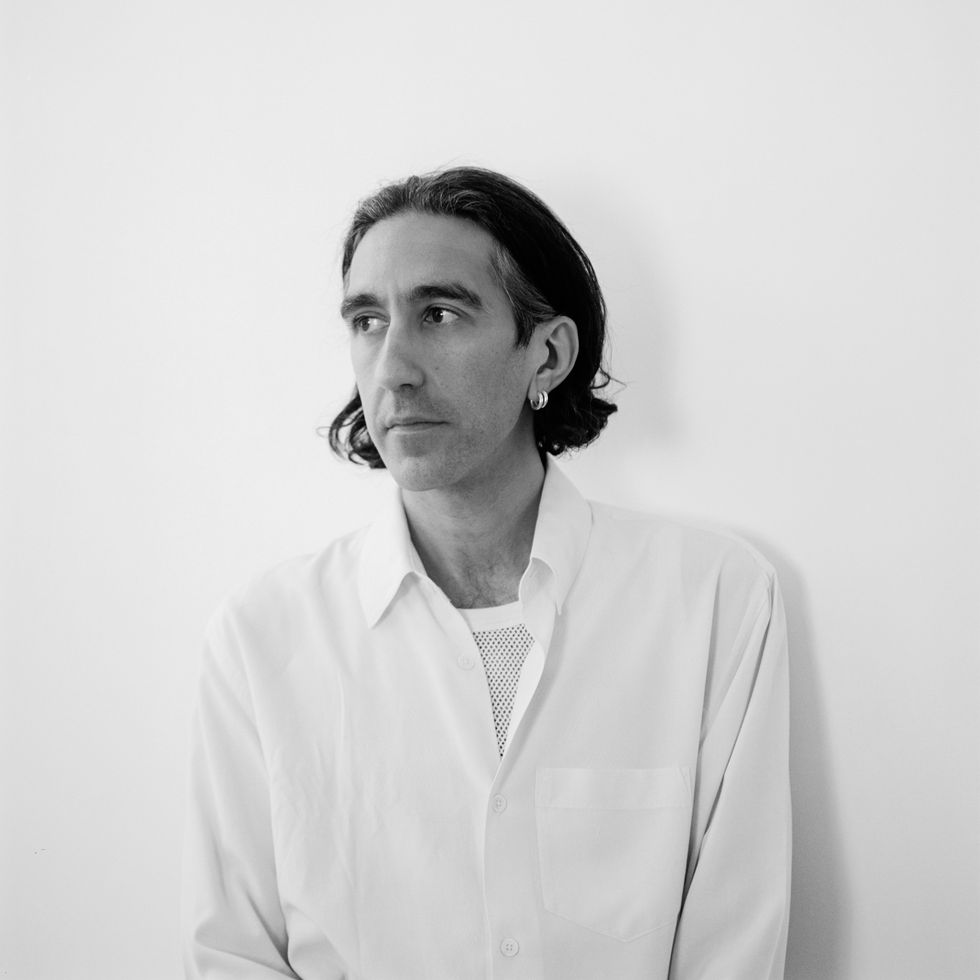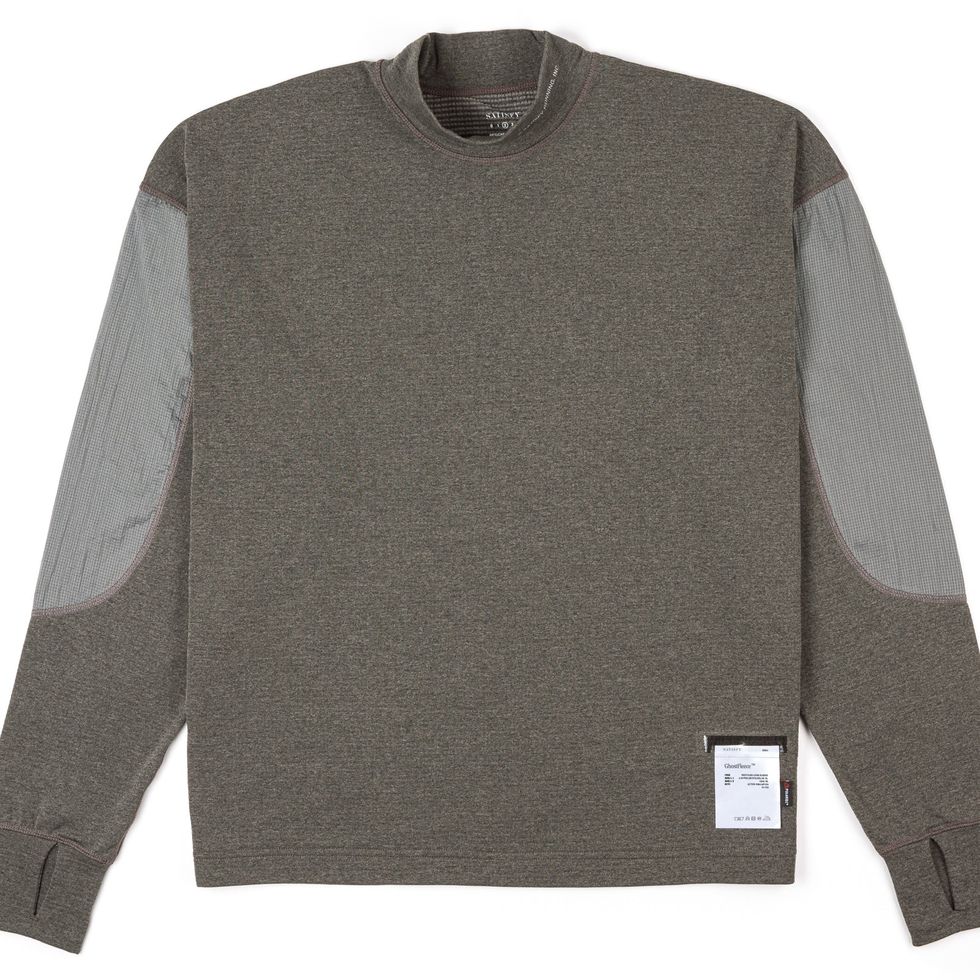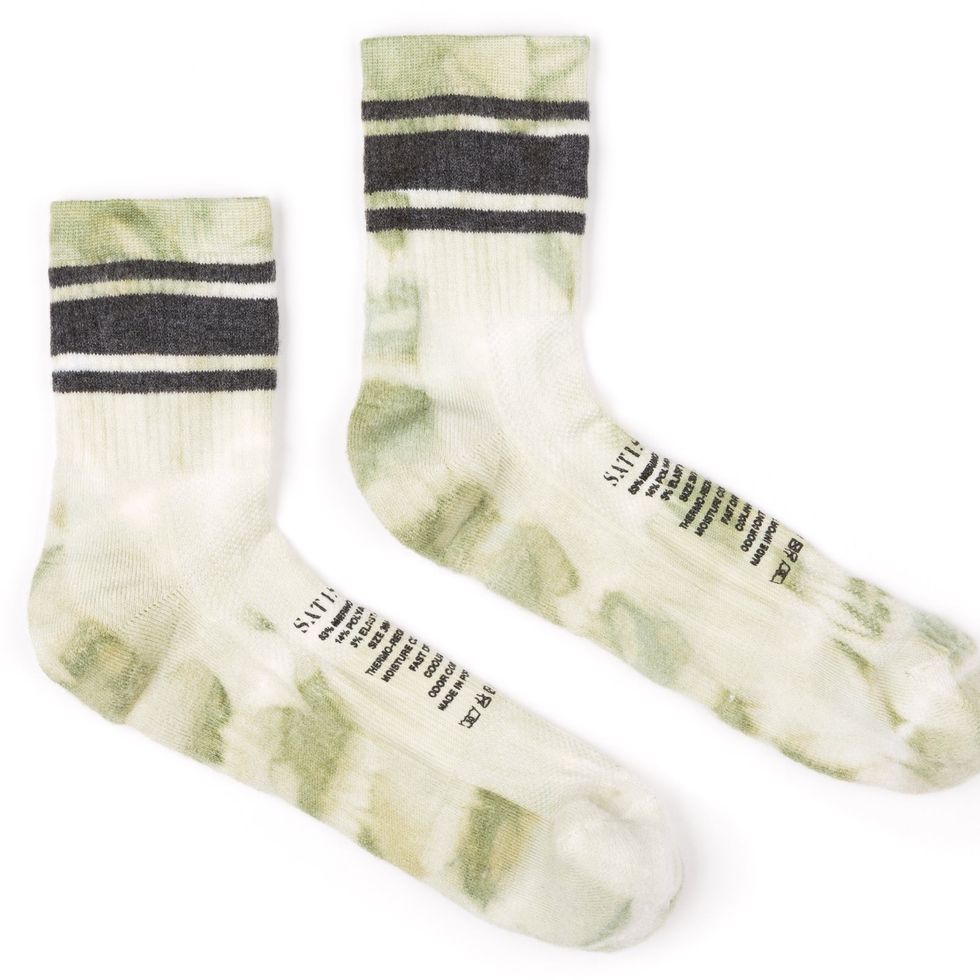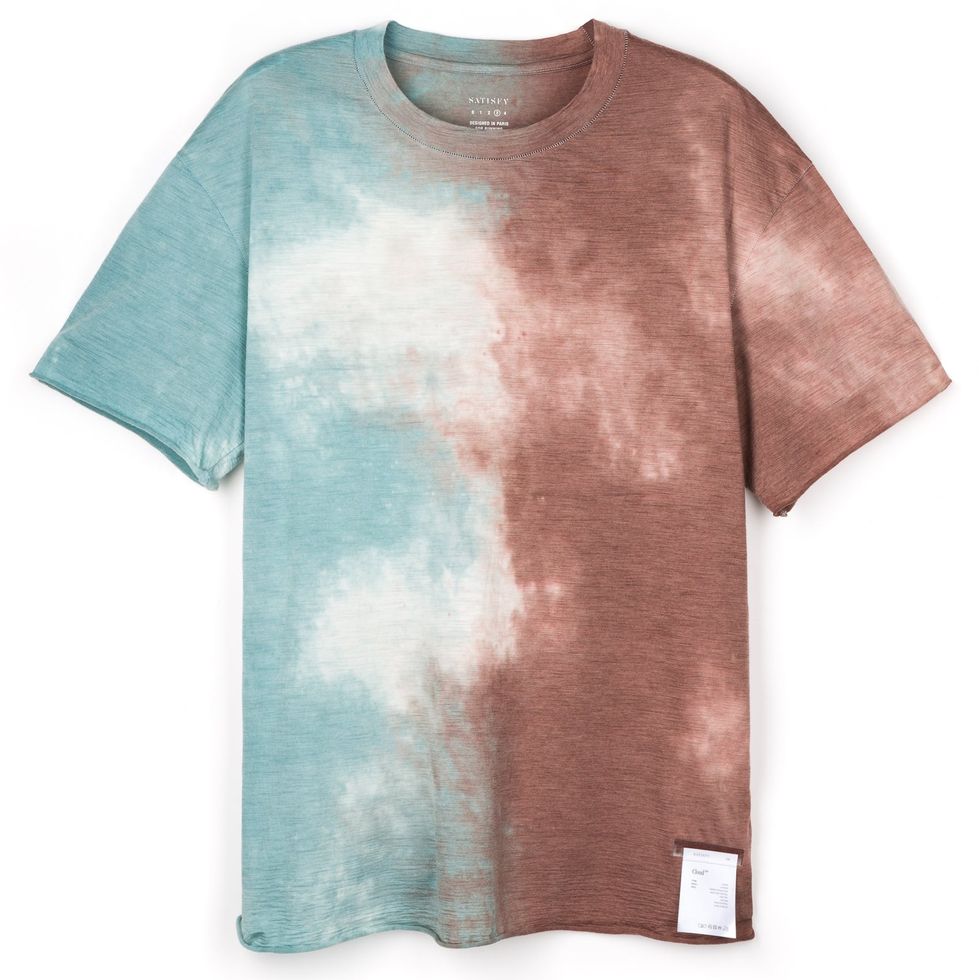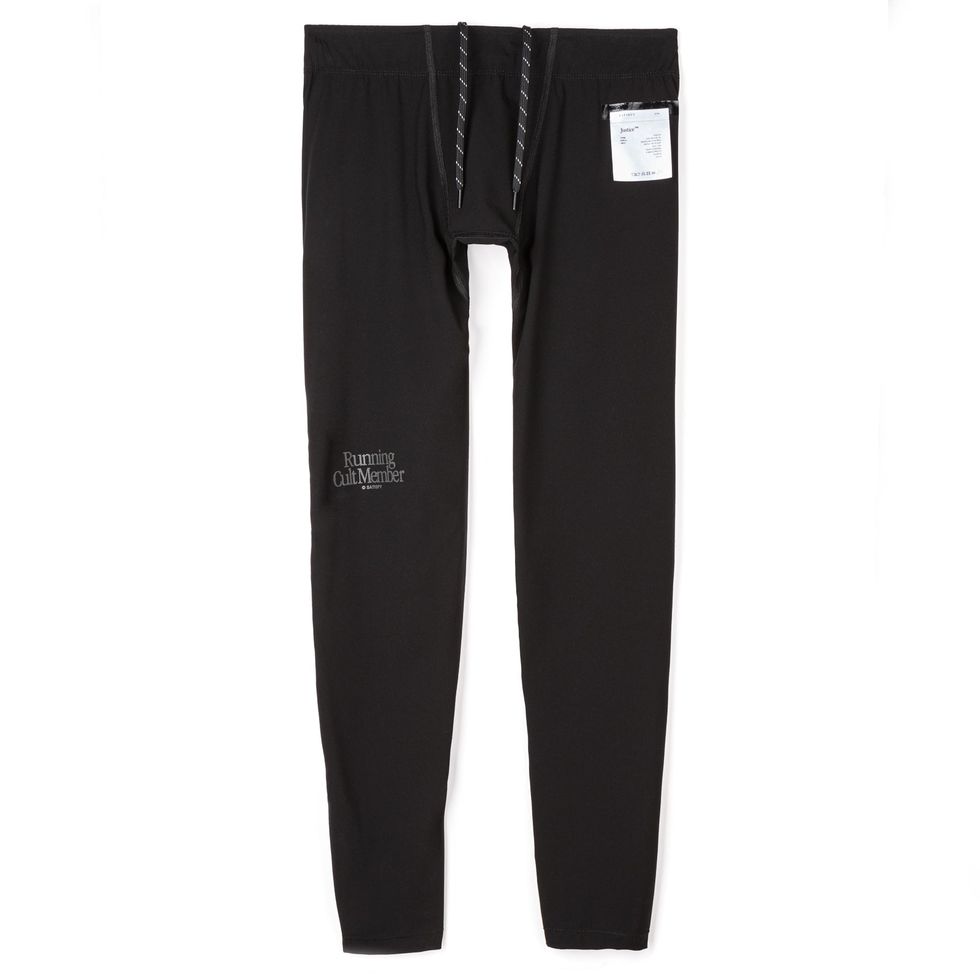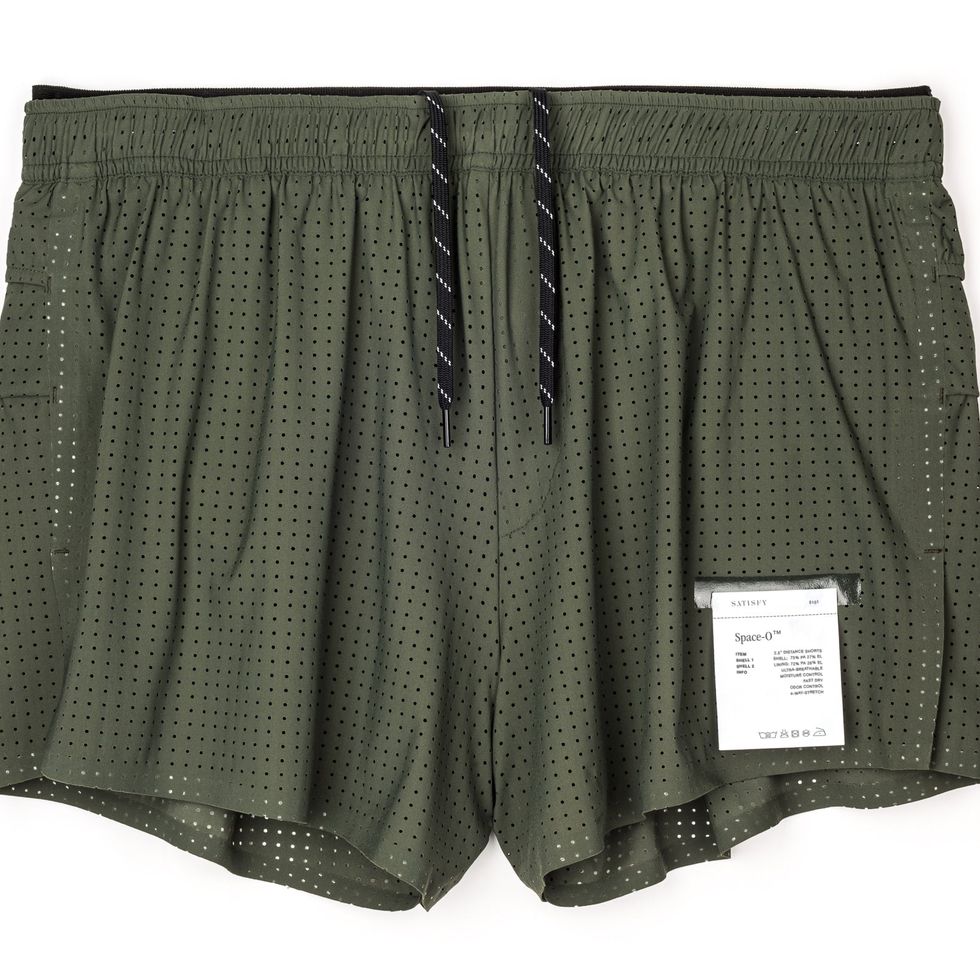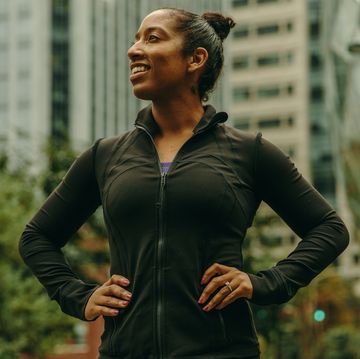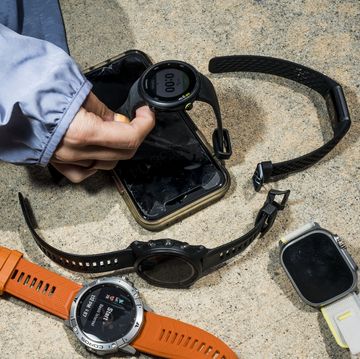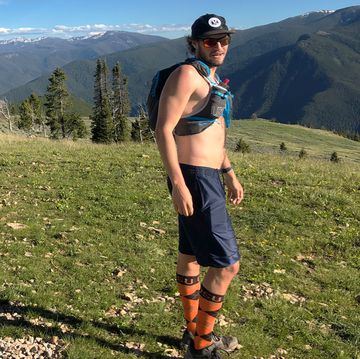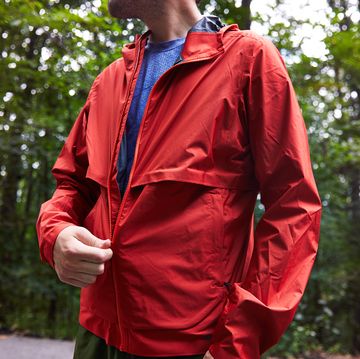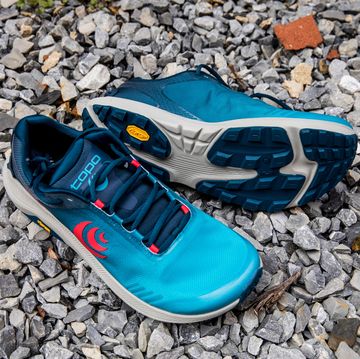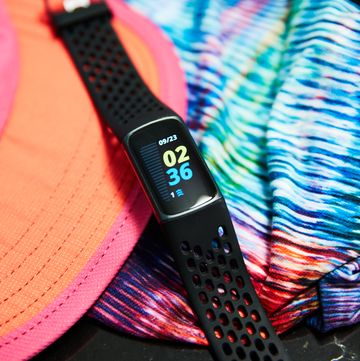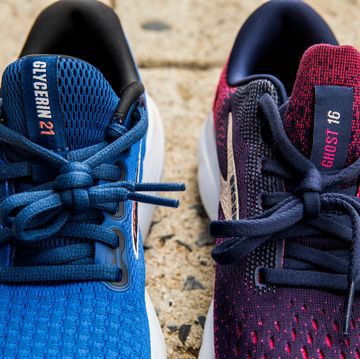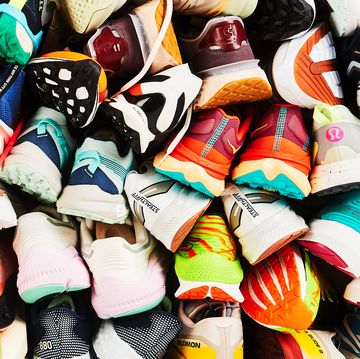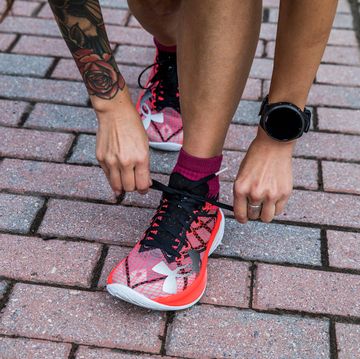If within your first minute on the Satisfy product page you don’t do a double take when you see the prices, kudos. You’re a less judgmental (or far wealthier) person than me.
“Who are these people?!” was my main thought the first few times I surveyed the site. My question was two-fold. First, who are the people paying $236 for a pair of trail shorts, or $215 for a tie dye short-sleeve shirt, or $322 for a pair of tights, or $65 for a bandana, or…you get the idea. Second, who are the people making this 70s-fonts-meet-space-age-fabrics gear splattered with phrases like “running cult member” and “run away?”
I mean, I know I’m just a middle-aged guy sitting at home in Maine. But is there really a massive Venn diagram overlap of adventure runner, disposable income, and punk/chillbro/psychedelic/hippie aesthetic? Did I miss where, per the Satisfy site, the best way to explain the recovery portion of a track workout is, “really take advantage of the 60 sec rest to get SO chill until the next rep”? I decided to find out.
Executive summary: The clothes are excellent, the prices aren’t necessarily outrageous once you consider all the factors, the brand’s founder is a passionate runner with an admirable DIY streak, and running is big enough to accommodate many approaches.
But I doubt I’ll ever buy a piece of Satisfy gear.
Birth of a brand
Satisfy is inseparable from its founder, Brice Partouche. Now 45, Partouche started running in his mid-30s and was immediately hooked. “I got high when I ran,” he says. “I was lucky enough to experience this at an early stage, which is why I kept going back to it.” His love for the life-changing magic of lacing up is palpable. He says things like, “I found running in my mid-30s, or running found me” and, “This is a dream of the brand—everyone should experience the high.”
What Partouche didn’t like about running was the clothing. “Most of the brands, the products are kind of cheap,” he says. “To me, the hand feel, the touch of the fabric is important.” He was also dissatisfied with the functionality of things like key pockets and phone storage in the gear he ran in; the distractions interrupted his sense of flow.
As a teen skateboarder, Partouche started a T-shirt brand. He later dropped out of medical school and founded a denim brand. A drummer, Partouche grew up listening to and playing punk rock. “These activities have a huge cultural value attached to them,” he says. “When I jumped into running, I couldn’t find any brand that supported this idea of running alone and running away from things.” Drawing on skateboarding’s and punk’s ethos, Partouche says, “If it doesn’t exist, you just do it yourself. I wanted to create product that will allow the high. I really believe that part of this could be achieved with the product you’re wearing.”
He spent several months developing prototypes. The first sales occurred in 2016. Headquartered in Paris, Satisfy now has 17 staff members. According to Partouche, North America makes up half of his market. (“France is 1 percent of the business,” he says a little ruefully.) Sales are almost entirely online, although you can find Satisfy gear in a few U.S. running shops like Renegade Running in Oakland, California, and The Loop in Austin, Texas. Partouche calls these “contemporary, new running stores with an experience.”
“I’m not obsessed with fashion,” Partouche says. “I’m obsessed with great products with a function.” Design, he says, “is always about solving problems—I want to run in the desert, I want to run in the mountains, what do I need? So we start with that story and we develop the product around the story.” Then, he continues, “we add cultural value, references that create a connection with the product, like a print, a tie dye, hand feel. It’s a balance of functionality and design. I like this image of a mix table, trying to push both knobs to the max without exploding the speaker. It’s a very romantic approach.” Indeed it is: “I want to squeeze in a few miles around the neighborhood before work” doesn’t strike quite the same chord.
Partouche’s vision of “cultural value” is both quite precise and hard to capture in a few words.
“My perception was not the spandex runner, it was running in the [19]60s, 70s,” he says. “No one else was really embracing this style of look and running. For me, running is like skateboarding. It’s a sport for rebels. I like this idea of bringing back running to its core values.”
Visually, think short shorts, bandanas, retro graphics, and occasional purposefully distressed tops. The latter come via Satisfy’s MothTech process, which incorporates small holes for ventilation. (Runner’s World did a collaboration with Satisfy last fall that incorporated a 70s-era version of the magazine’s name on MothTech tops.) A boxy, cold-weather top with elbow patches and a slight turtleneck I tested is unlikely to be mistaken for, say, Under Armour apparel. (My wife calls it my cosmonaut top.) In keeping with the demographics of 1970s running, Satisfy’s models are almost entirely young men, who appear to be the target audience. “Most of our products are gender-fluid, but we are planning to launch a line dedicated to the female form,” Partouche says.
I shared the Satisfy site with a running friend who has taught design. They responded with a list of phrases like “if running clothes were a trucker hat” and “engineered authenticity.” They also wrote, “This branding strikes me as a winking parody of indifference, offering a uniform anyone can purchase that’s designed to look like you give no shits about fashion when training and you are a serious macho runner like the runners back in the day—but a big dumb logo patch that signals to your peers in the know that this is actually a running lifestyle brand.”
About those prices
Partouche says Satisfy’s potentially eye-popping prices can be explained by the company’s approach to fabrics and production. The brand’s technical fabrics might cost 20 euros per meter. “You can find some big brand shorts for [this price],” he says. “This is only for us the price of the fabric,” which he claims can be 20 times more expensive per meter than what’s used to make Nike shorts. “That’s why you can’t compare—it’s just not the same product,” Partouche says. When it doesn’t use technical fabrics, Satisfy uses natural ones such as merino wool and organic cotton, and recycled fabrics.
Gear made of fabrics sourced in Europe are also produced in Europe. “Seventy to 80 percent of our products are produced in Portugal, under very fair [labor] conditions,” Partouche says. “That’s one big difference.” The merino that Satisfy uses is woven in Japan, and then the gear is produced there to lessen its environmental impact.
Partouche says the brand’s approach to product lines is also inspired by good environmental practices. There’s an evergreen line that’s always in stock, and there are occasional drops, produced in limited quantities (about 20 percent of a typical evergreen production run). “The idea here is to sell out the drops and not overproduce,” Partouche says. “We don’t have this putting-products-on-sale approach, which makes the brand more sustainable.”
I told Partouche that I and many other runners are on board with paying more for high-quality gear that’s produced ethically and sustainably, but that I saw nothing on the Satisfy site that gives context to the prices.
“This is the most challenging part now, to explain better what we do,” he responded. “We are 70 percent online. When you go to a store and touch the fabric, you can understand. On the website, if you just see a black T-shirt, it’s hard to understand.”
One runner’s reaction
I also told Partouche that the Satisfy apparel I ran in was some of the best gear I’ve encountered since taking up running in 1979. And I meant it. The cosmonaut top ($201) was warm enough as a single layer down to about 20 degrees, yet also comfortable into the mid 40s. Its boxiness easily accommodated underlayers, but I never felt constrained when doing faster runs in it. The tights ($159) I tested were even better. They, too, worked for a surprisingly large temperature range, and were just the right mix of sleekness and give. (Satisfy’s default currency is the euro; the exact dollar price varies depending on exchange rates.)
Of course, $200 tops and $160 tights better be excellent! Are they worth that much?
That depends on what you mean by “worth.” Anyone fortunate enough to have disposable income devotes some of that money to things others never would. I can’t believe how much my sisters spend on Major League Baseball tickets and Disney vacations. They would probably scoff at what I pay for a pound of coffee beans.
To continue the coffee analogy: It’s worth it to me to spend $20 for a pound of fair trade, organic, single-origin beans rather than $10 for a blend from Dunkin’. Beans that are $30 or more per pound are a different matter. I know the beans will be even better than what I usually buy, but not that much better. Maybe I’ll buy them as a gift or vacation splurge once or twice a year.
That’s where I’ve landed on Satisfy gear. Their merino wool socks are probably the most comfortable, best-functioning socks I’ve ever run in. Still, they cost $53 a pair. I can buy a pair of Darn Tough socks—also merino, also manufactured responsibly, and with a lifetime warranty—for around $25. For me, spending twice as much to get gear that’s perhaps 12 percent better isn’t worth it. I’m also not someone who likes slogans or big brand names on his clothes.
But that’s just me. Satisfy has an incredibly devoted Instagram following, and has now been in business long enough to counter knee-jerk they’ll-never-make-it predictions.
“Our approach to product design and craft is simply different from the rest, and I think that’s what makes us stand out,” Partouche says. “Today, our challenge is getting our product in people’s hands, because I’m convinced that when someone feels the textures of our fabric technologies, sees all the details that we inject into our design, they understand why we’re priced at where we are.”

Scott is a veteran running, fitness, and health journalist who has held senior editorial positions at Runner’s World and Running Times. Much of his writing translates sport science research and elite best practices into practical guidance for everyday athletes. He is the author or coauthor of several running books, including Running Is My Therapy, Advanced Marathoning, and Meb for Mortals. Scott has also written about running for Slate, The Atlantic, the Washington Post, and other members of the sedentary media. His lifetime running odometer is past 110,000 miles, but he’s as much in love as ever.

